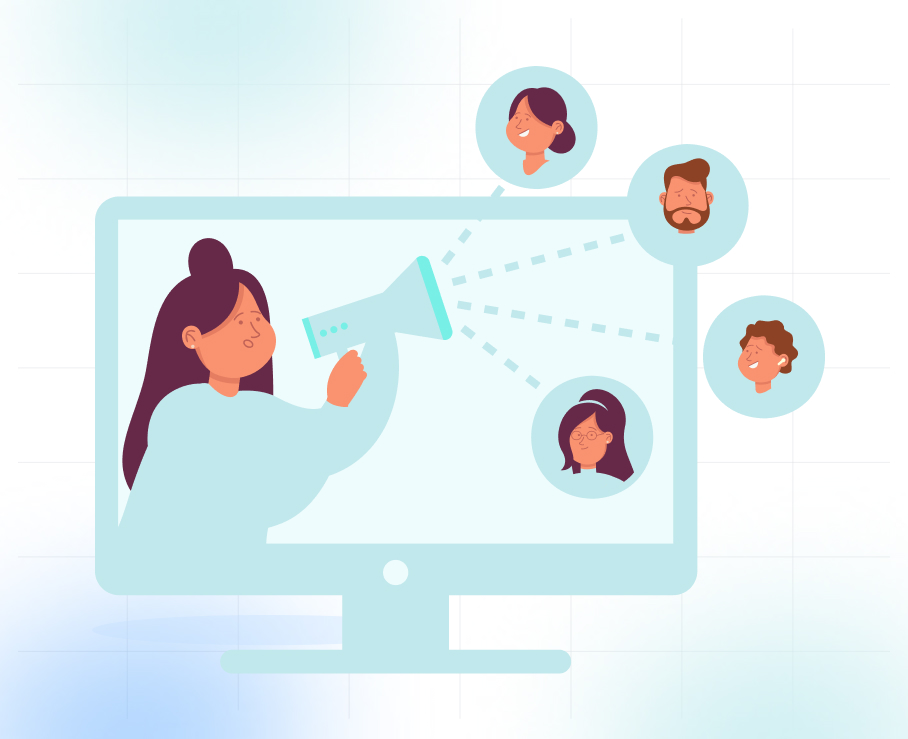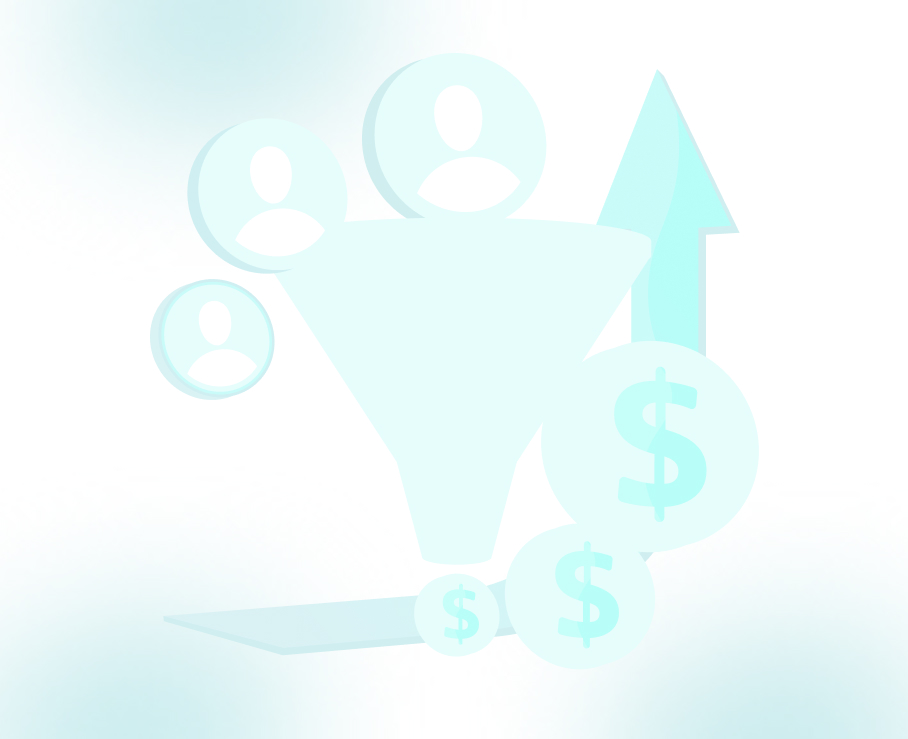
Improving Conversion Rates with Automation: Key Strategies

Marketing teams today are under growing pressure to do more with less, to be fast, consistent, and present across channels. That’s where automation is making a real impact. 63% of marketers say they use automation for email and social media management, making these two areas the most common starting points for marketing automation. Whether it’s scheduling posts or sending personalized campaigns at scale, automation helps teams save time while staying connected to their audience.
Zooming out, the trend is even bigger. According to IBM, 77% of companies have adopted generative AI. This highlights how businesses across industries are embracing smarter technologies to stay agile. In this blog, we’ll unpack what marketing automation really looks like today, where it’s being used most, and how it can help teams work smarter without losing the human touch.
Common Challenges Businesses Face When Using Automation
Even with automation tools, many B2B or B2C businesses struggle to convert leads into paying customers. The issue is not always a lack of automation but how it is implemented. Automation often falls short of delivering meaningful results without a solid strategy, accurate data, and seamless integration.
1. Poorly Designed Automation Workflows
Automating a broken process doesn't fix the problem. Many businesses utilise automation tools to send emails or schedule follow-ups, but often fail to effectively map out the buyer's journey. As a result, leads either fall through the cracks or receive irrelevant messaging. Without a structured funnel that guides prospects from awareness to decision, conversion rates remain low.
2. Outdated Tactics in a Digital Wrapper
Some businesses simply automate traditional cold outreach methods. This leads to impersonal, batch-style communication that today’s buyers tend to ignore. Automation should modernize the sales process, not replicate outdated habits. Simply replacing manual calls with templated sequences doesn’t add value unless those messages are timely, relevant, and tailored to buyer intent.
3. Lack of Personalization Despite the Tools
Automation tools can do a lot, but many businesses don’t tap into key features like behavioral triggers or tailored audience segments. Sending the same message to everyone, no matter their industry, interest, or where they are in the buying process, usually means fewer people pay attention. Real connection comes from understanding your audience and sending emails that genuinely resonate with where they are. True personalization is what turns a lead into a Sales Qualified Lead (SQL), and it requires smart use of data.
4. Insufficient Real-Time Insights
Automation without real-time data can't adapt to a prospect’s behavior. Sales and marketing teams often lack visibility into how leads engage, what content they consume, or when they're most active. Without live insights, campaigns run on guesswork instead of strategy. The result is a nurturing process that feels disconnected and misaligned with buyer needs.
Also Read: 6 Outdated Marketing Strategies You Should Leave Behind for Better Results
Having identified some common challenges in your automation efforts, the next step is to focus on improving conversion rates. Recognizing these obstacles is important, but meaningful progress comes from applying clear, practical strategies that nurture leads and drive sales growth. Let’s examine how to refine your automation workflows to better support ongoing growth. Even with automation in place, conversion rates can plateau if key elements are overlooked.
Key Automation Approaches to Boost Conversion Rates
Even if you already use automation, conversion rates can stall if certain critical elements are overlooked. Let’s explore key areas where many businesses struggle and how minor improvements can drive significant results.
1. Boost Lead Engagement with Timely, Relevant Follow-Ups
When leads express interest by downloading a case study, clicking a pricing page, or signing up, the clock starts ticking. Delayed or impersonal follow-ups are one of the fastest ways to lose them.
The problem? Many teams rely on manual reminders or blast out one-size-fits-all messages. This either delays the response or makes it feel robotic; neither builds trust.
A stronger approach:
- Trigger-based automation: Set up workflows that respond instantly to specific lead behaviours, not just form fills, but also deeper engagement like page views or email clicks.
- Multi-step nurturing: Don’t stop at one email. Use strategically spaced touchpoints across email, SMS, and calls to stay present without overwhelming your audience.
- Contextual messaging: Reference what the lead actually did — “noticed you checked out our pricing page” performs far better than “just following up.”
Speed matters, but relevance wins. The combination of the two is where follow-ups stop being a task and start becoming conversion points.
Read: Lead Generation: Proven Strategies and Expert Tips to Boost Your Sales
2. Focus on the Right Leads — Not Just More Leads
A full pipeline is meaningless if it’s filled with cold or misaligned leads. Often, teams spend weeks chasing contacts who either aren’t decision-makers or simply aren’t ready to buy. This creates unnecessary fatigue in your sales process and eats up valuable bandwidth.
Instead of treating every inquiry equally, it’s crucial to qualify leads with precision. A well-defined Sales Qualified Lead (SQL) framework, based on behavior, firmographics, and intent, ensures you’re spending time where it counts. The more intentional your qualification process, the smoother your conversions will be downstream.
Refine Your Lead Strategy:
- Build dynamic scoring models that evaluate actions like email engagement, site visits, and form fills alongside firmographic fit.
- Regularly review and recalibrate scoring based on real-time campaign data.
- Ensure sales and marketing are aligned on what an SQL looks like — this reduces friction and increases conversion velocity.
- Build a warm-up strategy for your domains and SMTPs to improve inbox placement and engagement rates.
TLM brings structure to lead qualification and follow-ups.
Our Inside Sales team sets up the complete appointment-setting funnel, from identifying ICP-aligned contacts to managing outreach, warming up your sender reputation, and booking calls. That means less time chasing and more time closing.
Start Smart with the Right Processes:
At TLM, warm-up isn’t an afterthought. We train SMTPs and gradually scale sending volumes to ensure your emails land in inboxes, not junk. Most businesses ignore this and then wonder why open rates drop. Our warm-up processes are built into our B2B subscription model, so you’re not left to figure it out alone.
Also Read: How Advanced List Cleansing Enhances Expiring Data and Elevates Poor Leads
3. Increase Conversions with Personalization and Segmentation
Generic messaging turns leads off and lowers conversions. What you might be doing wrong:
- Sending one-size-fits-all emails that don’t address individual pain points.
- Ignoring behavioral and demographic data that could tailor communication.
- Failing to segment your audience based on buyer journey stages.
For instance, a prospect interested in pricing might receive a generic email about product features, missing the opportunity to push them closer to purchase.
To fix this:
- Use behavioral data (like page views, downloads, and clicks) to shape your messaging.
- Segment leads based on interests, industry, and stage in the funnel.
- Automate the delivery of personalized content at the right moment.
Personalized messaging builds stronger engagement and increases the chances of conversion.
4. Run Smarter Email Marketing Campaigns
The success of an email campaign doesn’t lie in how many emails you send, but in how quickly you learn, optimize, and adapt. Many businesses miss performance dips until it’s too late. By then, the best opportunities have already moved on, or worse, gone cold.
Campaigns today need to run with the agility of a conversation, real-time feedback, timely adjustments, and ongoing refinements.
Ways to Build an Agile Email Engine:
- Set up dashboards to track open rates, click-throughs, and reply patterns in real-time.
- Use A/B tests and drip automation to identify what resonates and what doesn't, early.
- React instantly with trigger-based emails to re-engage or follow up without missing a beat.
- Continuously fine-tune your campaign based on recipient behavior, not intuition.
At TLM, we enable campaign slicing by industry, role, and service type, down to the granular level. And the result? Better-aligned conversations and fewer wasted touchpoints. Some of our clients have secured top-5 revenue-generating customers by starting with small wins, such as remote patch management, and scaling up to full-service IT contracts.
What does this look like in action?
Take the case of a California-based MSP franchise that partnered with us to revamp its email outreach. Before TLM, they were stuck with expensive lead-gen vendors and zero visibility into their campaigns. There was no clarity, no ownership, and no way to decide which leads were worth pursuing.
We launched a pilot in one region, Maryland, and focused on IT decision-makers in local companies with 10+ employees. From data discovery and messaging to scheduling intro calls, we handled every part of the campaign.
- Month 1: 11 qualified leads
- Month 2: 7 more
Shortly after, over 100 franchise locations signed up, each now receiving an average of 3 qualified leads per month, with full transparency and the power to choose who they talk to. Click to read more.
Unlike generic outreach, our method builds momentum. The outcome? Conversations that convert, even when the first ask is small. Our clients often scale those leads into long-term, high-ticket partnerships.
Read: A Beginner’s Guide to B2B Contact Discovery and List Building
5. Create Seamless Journeys Through Platform Integration
If your tools aren’t talking to each other, your leads are probably confused. Disconnected platforms often lead to duplicated outreach, missed follow-ups, or worse, mixed messages.
Your CRM, email platform, analytics, and sales tools should work together seamlessly as one cohesive team. That doesn’t always mean buying new software; often, it’s about connecting what you already have through APIs or native integrations.
The goal is simple: a single view of the lead, across every touchpoint. This unified visibility helps you track engagement, avoid mistakes, and personalize the journey from first touch to close.
For companies that require an out-of-the-box solution, platforms like TLM provide targeted campaign management, allowing businesses to tailor their outreach efforts precisely. In addition, TLM offers fully integrated lead management, breaking down silos and streamlining the sales journey for everyone involved.
6. Maintain Human Connection by Avoiding Over-Automation
Too much automation can feel robotic and turn leads away. What you might be doing wrong:
- Sending repetitive, impersonal messages that annoy prospects.
- Ignoring opportunities for personal outreach at critical moments.
- Relying solely on automation without human intervention.
Picture a lead receiving five emails weekly with no human contact to address their questions. It's a missed opportunity.
To fix this:
- Combine automation with human outreach during key conversion points
- Set rules to escalate high-intent leads for personal follow-up
- Use tools to trigger calls or calendar invites when engagement spikes
Adding personalized touches at critical moments builds trust and improves conversion rates. For instance, TLM helped an Albuquerque-based industrial staffing agency struggling to convert cold leads into sales-ready opportunities by combining automated campaigns with timely, human interactions at key points in the sales cycle, boosting engagement and lead qualification.
Results:
- Secured numerous work orders within three months.
- Witnessed a surge in business and filled multiple positions.
- Expanded the program to generate more qualified appointments.
- Became a long-term strategic B2B partner for lead generation.
A McKinsey study confirms that striking a balance between automation and a human touch enhances customer satisfaction and conversion rates. So why wait? With TLM’s inside B2B sales solution, you can schedule personal check-ins triggered by lead behavior, sparking meaningful conversations and ensuring a seamless experience throughout the lead journey.
To conclude, by implementing strategies such as timely follow-ups, data-driven lead scoring, personalized messaging, real-time campaign optimization, seamless platform integration, and maintaining a human connection, you can harness the full power of automation and significantly boost your B2B conversion rates.
Also Read: 5 Email Types That Should Never Be Automated and Require a Personal Touch
Boost Your Conversion Rates with TLM (The Lead Market)
At TLM, we don’t just implement automation. We build targeted, results-driven systems that convert prospects into customers more efficiently. With 9+ years of experience in B2B lead generation and appointment setting, we help MSPs, staffing firms, and tech companies optimize every step of their funnel to increase conversions and grow revenue.
Here’s how TLM powers better conversions:
- Lead Nurturing Workflows: Keep leads warm and move them smoothly through your pipeline until they’re ready to buy.
- Real-Time Campaign Insights: Track conversion performance and refine strategies with transparent dashboards.
- Sales-Ready Lead Delivery: Automation ensures only qualified, interested prospects reach your sales team, maximizing their time.
Stop missing opportunities due to manual delays or generic follow-ups. So, why wait? Boost your Monthly Recurring Revenue (MRR) without wasting time on cold calls or unqualified leads.
Schedule a meeting with our experts to see how our B2B lead generation services can help you reach your conversion goals faster.
FAQs
1. What is the most effective way to improve your conversion rate?
The most effective way to boost conversion rates is by combining automation with a solid strategy, timely follow-ups, personalized messaging, real-time optimization, and a human touch. A B2B lead generation agency, such as The Lead Market (TLM), can help implement these strategies efficiently.
2. What are the six primary elements of conversion rate optimization?
The six key elements are:
- Timely follow-ups
- Data-driven lead scoring
- Personalized messaging
- Real-time campaign optimization
- Seamless platform integration
- Balancing automation with human interaction
3. Which three actions can improve your conversion rate?
Three key actions include:
- Automating personalized follow-ups
- Using data to prioritize ready-to-buy leads
- Continuously monitoring and adjusting campaigns
4. What is the KPI for conversion rate?
The KPI for conversion rate measures the percentage of leads or visitors who complete a desired action, such as making a purchase or submitting a form, compared to the total number of leads or visitors. Tracking this helps assess the effectiveness of your lead-nurturing efforts.






